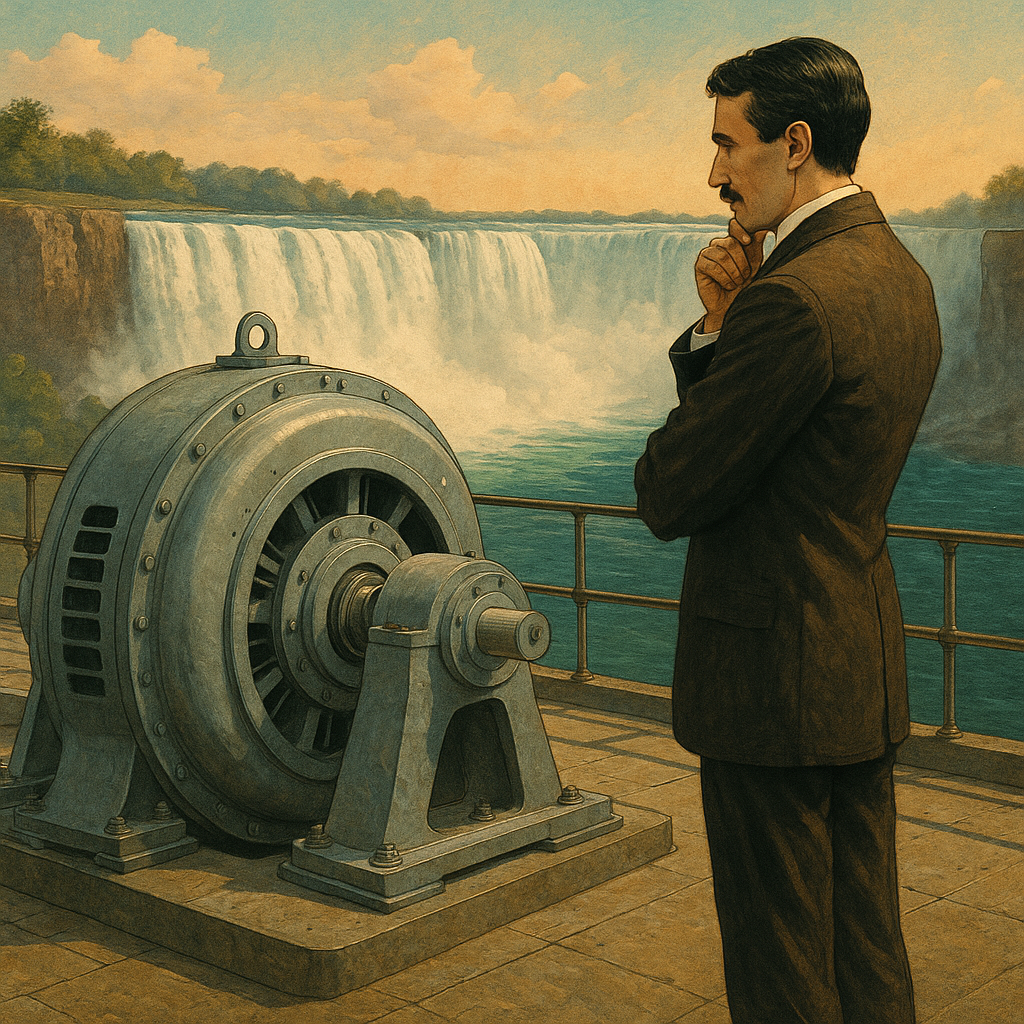From Budapest to Paris: Searching for a Path
After his “Eureka” moment in the City Park and the mental clarity with which he envisioned the rotating magnetic field, Tesla still had a long way to go to bring this revolutionary idea to life. Like today, every technical innovation required significant material resources—something a recent graduate had no access to.
In 1881, Tesla found his first job at the Central Telegraph Office in Budapest, working on installing telephone exchanges. He quickly demonstrated not only exceptional technical precision but also innovation. He improved telephone repeaters, catching the attention of Ferenc Puskás, a high-ranking official. Puskás, impressed by Tesla’s ideas, arranged for him to move to Paris and work for the European division of the Edison Company. There, Tesla engaged in laying telephone lines and launching direct current (DC) power stations.
Encounter with Edison and the Shock of America
In the fall of 1882, Tesla began working in the “City of Light,” again showcasing talent not only in implementation but also in enhancing existing systems. But Europe didn’t offer the means to develop his revolutionary motor. He made the difficult decision to leave for the United States in 1884.
America greeted Tesla with a cultural shock, but also with new opportunities. He met the great Thomas Edison, whose European company branch he had worked for. Although their personalities differed greatly, mutual respect formed quickly. Edison entrusted Tesla with great responsibilities and freedom.
Working feverishly—often from 10:30 AM until 5 AM the next day—Tesla designed 24 types of standard machines with short cores in a single year, hoping to receive the promised reward of $50,000. When this turned out to be an empty joke, Tesla left the company in disappointment.
Founding Tesla Electric Company and the First Breakthrough
Tesla joined a short-lived company focused on arc lighting, but the real turning point came in April 1887 when he founded the Tesla Electric Company with a proper laboratory and equipment. He finally created the first prototypes of his motors and filed patent applications for his polyphase alternating current system. The patents were granted successfully.
In early 1888, Tesla signed a major licensing agreement with Westinghouse Electric, allowing mass production of his motors. On May 16, 1888, Tesla delivered a historic lecture at the American Institute of Electrical Engineers, demonstrating the operation of his induction motor. His name gained fame and credibility overnight.
The Rise of Alternating Current and the Defeat of Direct Current
Between 1887 and 1889, Tesla published over 40 patents related to polyphase alternating current. His system offered many advantages over Edison’s direct current (DC) systems:
- Efficient long-distance transmission by using transformers to step up voltage
- Skin effect in AC conductors allowed for lighter, hollow conductors
- Simpler and more reliable motors
- Lower maintenance costs
These scientific and technical advantages led to victory in the infamous “War of Currents”, in which Tesla and Westinghouse triumphed over Edison’s entrenched influence and DC legacy.
Niagara Falls: The Triumph of Vision
The practical implementation of Tesla’s ideas at Niagara Falls was the clearest confirmation of the superiority of alternating current systems. The project symbolized not only the success of a young immigrant’s dream but also laid the foundation for global electrification.
Tesla’s innovations paved the way for the Second Industrial Revolution. America, his adopted homeland, emerged as a technological superpower, largely due to Tesla’s groundbreaking ideas. What began as a vision in the mind of a lonely engineer walking through a park became one of the cornerstones of the modern world.
The story of Nikola Tesla continues. In the upcoming posts on MilovanInnovation, we will explore the further development of his inventions, his visionary experiments with wireless energy, and the final chapters of one of the most extraordinary scientific lives in history.


Leave a Reply